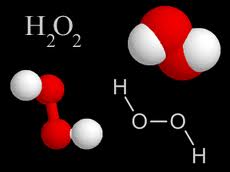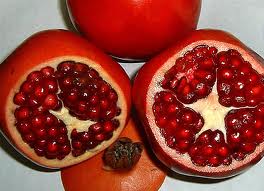Juicing 101
So you have decided to juice, whether it is for a fast to cleanse or lose weight or just as a healthy alternative. Here are some things you need to know.
Cleaning Fruit and Veggies
All fruit whether it is organic or not needs to be cleaned. Cleaning the organic fruit is more to take off the dirt and bug trails that naturally happen during growth. The non-organic fruits and veggies have had all sorts of chemicals sprayed on them and these chemicals are made not to wash off in a rain, so they need to cleaned with more than water. You can use a mild soap and warm; that does a fairly good job, but remember to rinse at least three times to get rid of the soap.
There are special products you can purchase such as "natureclean®" Fruit and Veggie soak, that comes in a concentrated form or a spray. This product does an excellent job of washing away any unwanted chemicals, but if you are doing serious juicing the cost can be prohibitive.
An effective, simple and cost effective system is using hydrogen peroxide solution in combination with vinegar. Don't let the name hydrogen peroxide scare you, Hydrogen Peroxide is simply water with an extra oxygen molecule (H2O2) and breaks down into oxygen and water. H2O2 is produced by both animal and plant cells and is formed naturally in the environment by sunlight acting on water.
The process is to have a 3% solution of hydrogen peroxide (available at any drug store) in one dark colored spray bottle. Sunlight will ruin the effectiveness of the hydrogen peroxide. If a dark colored spray bottle can't be found adapt a sprayer to fit right in the container it comes in. The vinegar can be in any spray bottle.
Wash the produce under clean water to remove any soil and surface dirt, spray with the vinegar, then with the hydrogen peroxide. On some of the smoother produce such as apples and larger ones like watermelon it is a good idea to give it a quick scrub with a plastic scrubber. Give the produce one last rinse under water and it ready to be eaten.
On fruit that have a lot of hard to reach crevices such as grapes the last step should be soaking in a sink or tube of fresh cold water for a few minutes. The leafy produce such as chard, kale, lettuce etc, should still be sprayed by both vinegar and hydrogen peroxide but again left to soak for a few minutes, and agitating them slightly to get the water flowing around.
If the produce is not to be used immediately it is important to dry them before putting them in a fridge or in other storage. Most will air dry but the leafy greens dry best with an inexpensive salad spinner.
While you have your hydrogen peroxide handy it make a great disinfectant for your work area and juicer.
To Peel Or Not To Peel: That Is The Question
When every possible juice the while fruit rind and all, there are only a few exceptions. All citrus fruit should be peeled leaving as much of the underlying pith as possible. This pith area is where a large percentage of the nutrients are found. The outer skin contains oil that is both bitter and flammable; in every case it is a good idea not to eat anything flammable. Just watch what happens when the peel of a lemom is squeezed near an open flame, then ask if yourself if you really want to eat that.
Melons can all be juiced once cleaned with their rind. In cantaloupe it’s almost impossible to take off just the outer dark skin without taking away most of the meat which is next to the skin which contains as much as 75% of the nutrients. Melons such as watermelons have about 95% of their nutrients in the rind, when all of the watermelon is juiced at the same time the taste remains almost the same.
Fruits such as grapes once cleaned should be juiced attached to the stems, there stems are in fact the part of the plant that transfers all of the water and nutrients to the fruit and hold a concentrated source of nutrients. This also applies to fruit such as tomatoes that may still be attached to the vine.
In one particular plant it is imperative that the leaves not be juiced, the rhubarb has a toxic leaf and can lead to sever cramping and vomiting and in enough quantity it may require a hospital visit.
There is one other exception, the pomegranate, has virtually all of its nutrients in the seeds, the outer shell is almost void of any benefit and is quite bitter.
Vegetables need to be cleaned as well as have their ends cut off that were in the soil such as the bottom of a celery stalk, these woody areas add no nutritional value to the juice and can be hard on your juicer.
Note: The seeds found in fruit all contain varying amounts of Cyanide, this is natural and is a built in protection for of seeds, against attack by parasites. In smaller seeds such as pears and apples, it is in such trace amounts that you can put them through the juicer without concern. The cyanide found in seeds does not decompose in the human body and are used in the food industry as, e.g., an anti-caking agent in table salt and flour.








